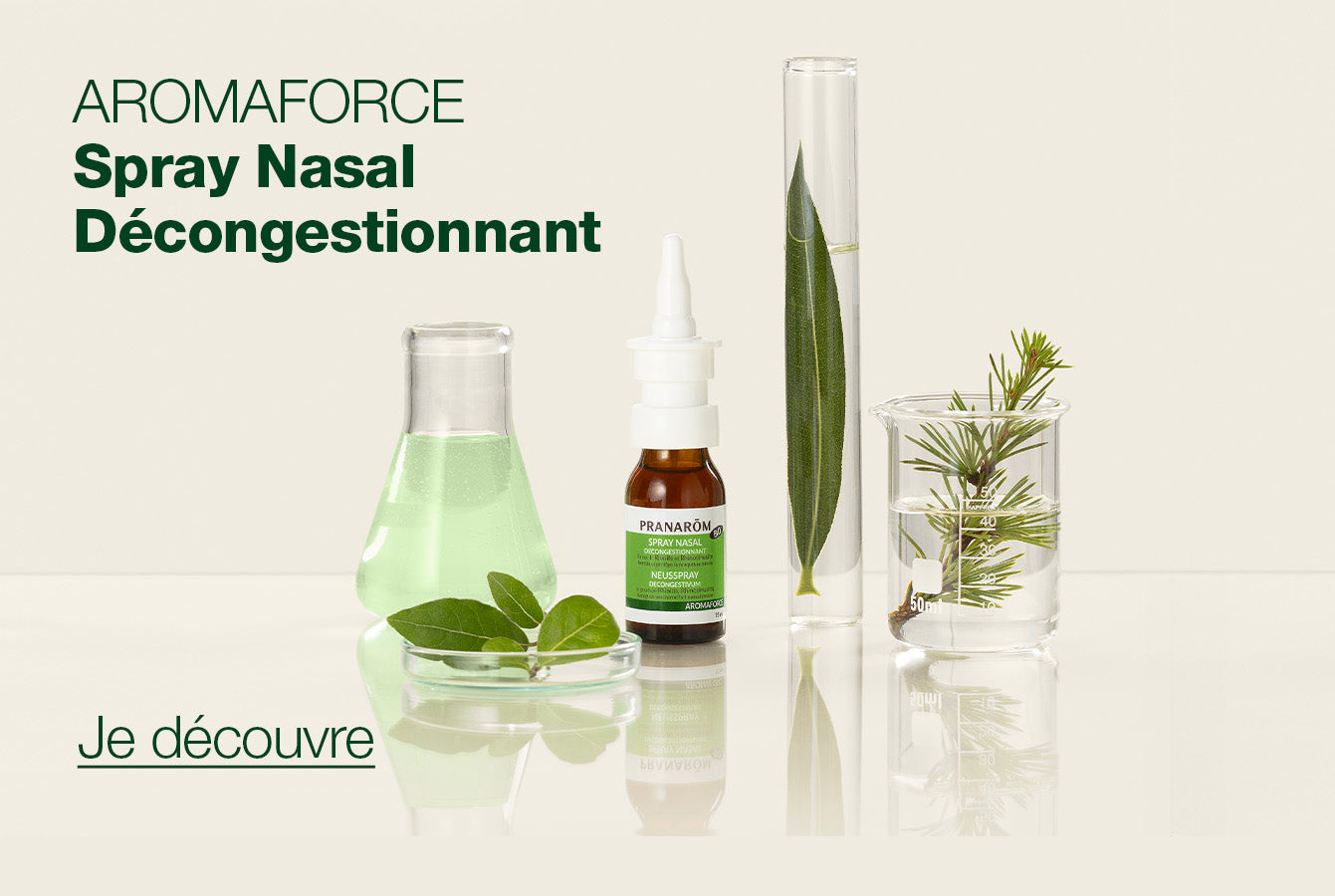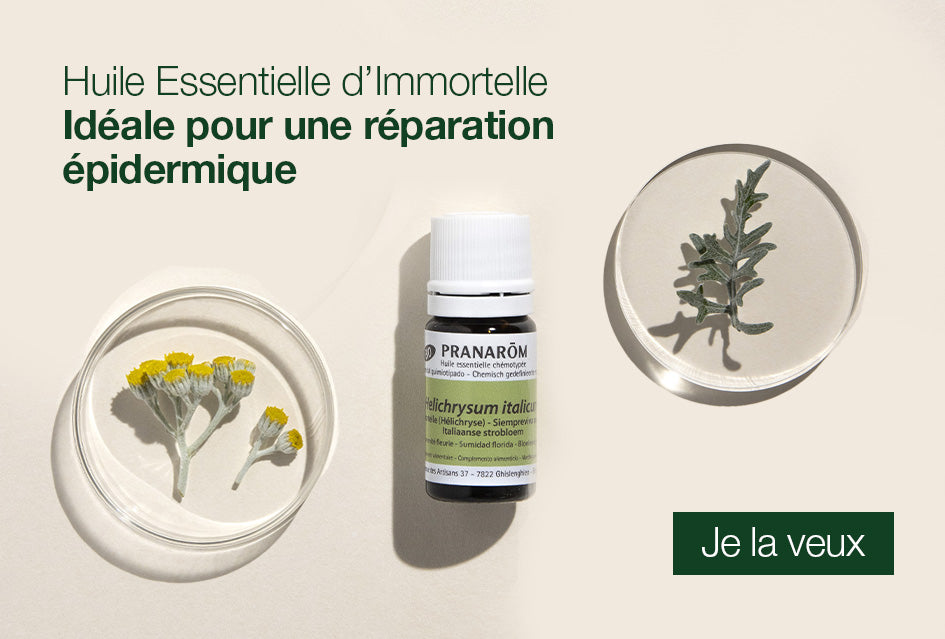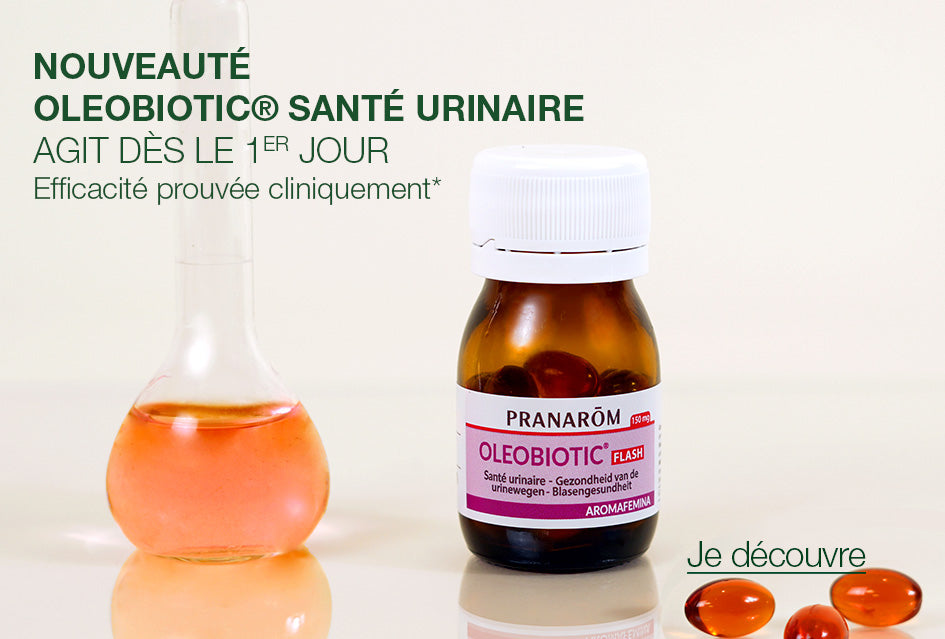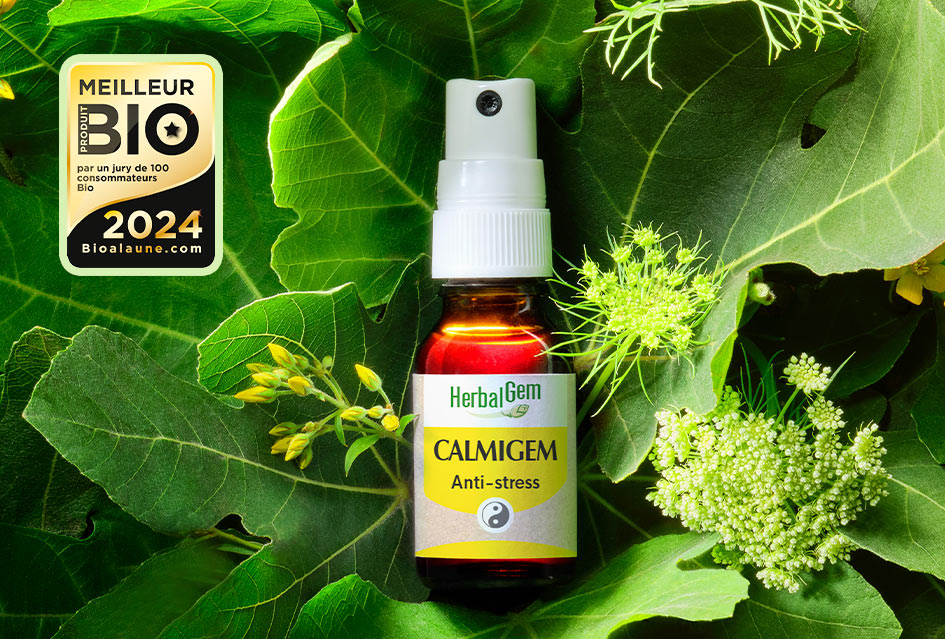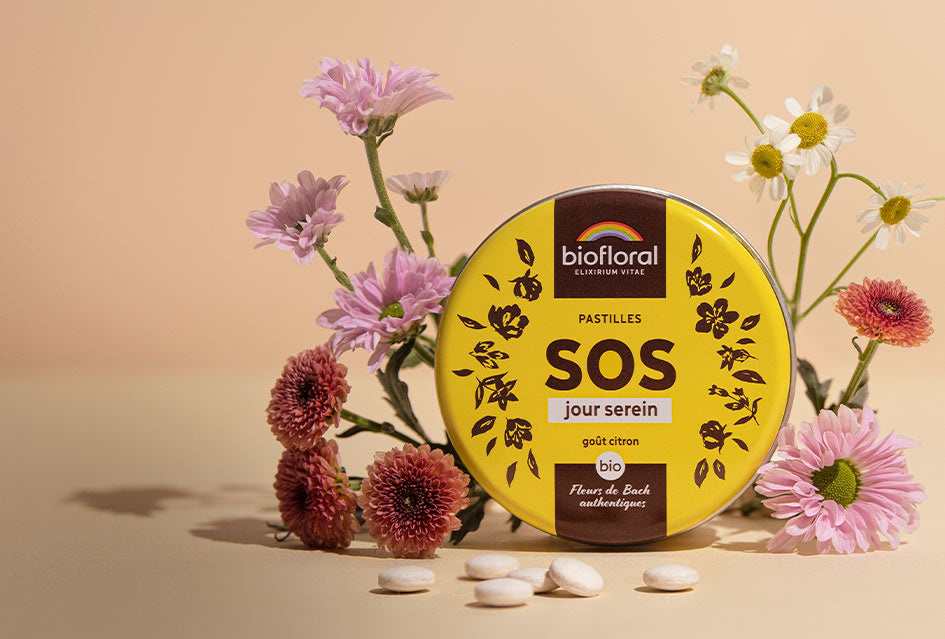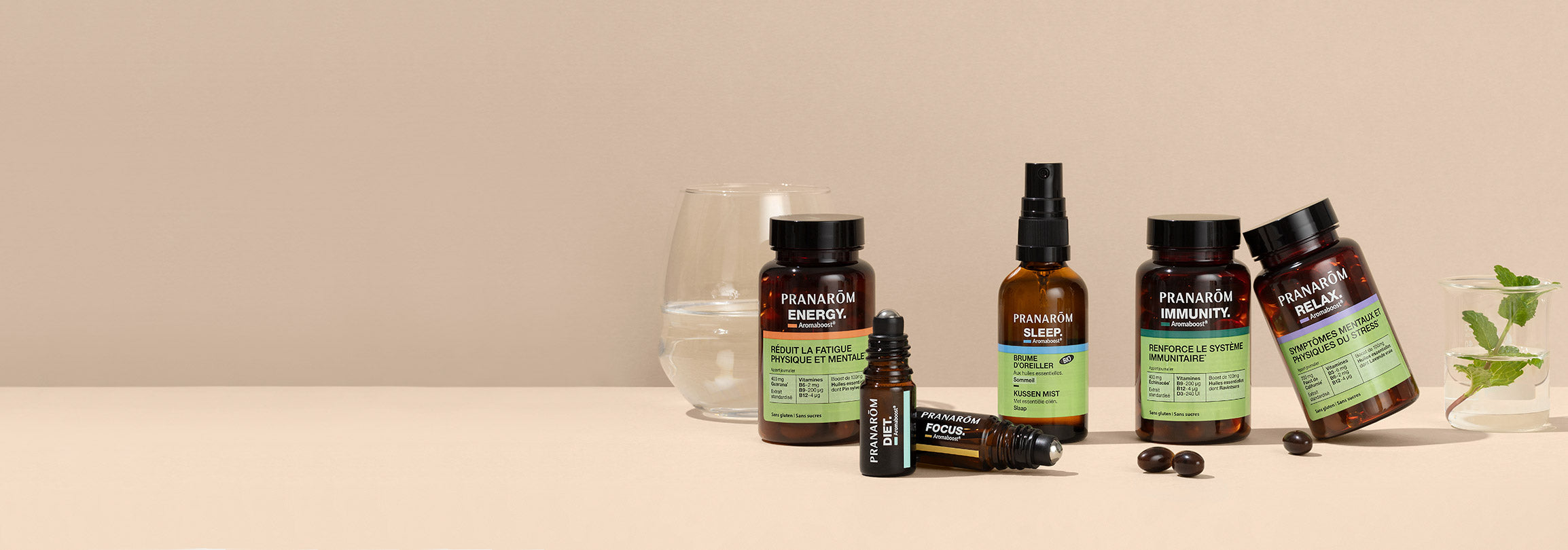FAQ
Use of essential oils and vegetable oils
What is an Essential Oil?
What is an Essential Oil?
An Essential Oil is a naturally aromatic liquid extract obtained from plants, such as flowering tops, leaves, stems, roots, barks or fruits. It is generally obtained by steam distillation or by cold pressing.
Essential oils are highly concentrated and contain the active volatile compounds of the original plant. They have distinct and characteristic odors, as well as varied therapeutic properties. Each Essential Oil has a unique chemical composition that gives it specific effects on the body and emotions.
It is important to note that essential oils are very powerful and should be used with caution. They usually need to be diluted in a carrier oil before being applied to the skin, and some essential oils can be toxic if ingested without proper supervision.
What is a Vegetal Oil?
What is a Vegetal Oil?
A vegetal oil is an oil extracted from the seeds, nuts or fruits of oil-producing plants. Vegetable oil is traditionally made by cold extraction where the seeds or nuts are mechanically pressed to extract the oil. This method preserves most of the nutrients and beneficial compounds present in the seeds.
A vegetal oil comes from fatty substances extracted from the seeds, pips, and kernels of a plant. For example, we find vegetable oils from apricot kernel, jojoba, avocado, nigella, argan, sweet almond, rosehip, evening primrose, etc.
While an oily macerate is a method of extracting the active ingredients of a plant by maceration in a neutral base vegetable oil. Generally sunflower, so that it is impregnated with a maximum of active molecules. We find for example the macerate of Carrot, St. John's Wort, Arnica, Calendula, etc.
Vegetal Oils are used for a variety of purposes, including cosmetics, as ingredients in skin care products, lotions, creams, soaps and hair products. Gentle and easy to use, they can be used alone or in synergy with other Vegetal Oils.
Vegetal Oils can generally be used by the whole family. In particular, more neutral oils such as Sweet Almond or Apricot Kernel Vegetable Oil. However, be careful with Rosehip Vegetable Oil, which is not always tolerated by sensitive skin. When you test a Vegetal Oil for the first time, it is better to test it first in a very small quantity in the crease of the elbow.
Visit this page to learn more about Vegetal Oils.
What is a Hydrolate?
What is a Hydrolate?
Hydrolat, also called floral water, is obtained by steam distillation of aromatic plants. It is made up of the aqueous phase and separated from the Essential Oil. The distillation process of a plant will lead to the development of two products: the Essential Oil and the aromatic Hydrolat.
Hydrolats are easier to use and better tolerated than Essential Oils because they contain mostly water and a low concentration of aromatic molecules.
They are commonly used in therapeutic care and as ingredients in cosmetic formulations, such as lotions, creams or masks. They can also be used to refresh, soothe, moisturize, balance the skin, and they are suitable for all skin types, including sensitive skin.
Hydrolats are very "gentle" compared to Essential Oils and do not have any particular contraindications. A small exception, however, is Rosemary and Tea-tree Hydrolats, which are recommended from the age of 3 and not from birth.
The Hydrolats developed in the Pranarôm laboratory are 100% pure, they come from fresh plants certified 100% organic, they are undiluted (no addition of water) and without additives (perfumes, preservatives, alcohol). Finally, they are packaged in metal spray bottles under compressed air. This will allow you to benefit from a fine mist and a 100% pure and natural Hydrolat.
Why do you offer organic and non-organic Essential Oils?
Why do you offer organic and non-organic Essential Oils?
True to our absolute respect for plants and nature, we work closely with producers of Essential Oils directly in the field. As far as possible, we favor organic harvests, respecting the legislation of the producing countries and prioritizing quality above all.
Since not all countries necessarily have an organic accreditation body, it is sometimes simply impossible to find the ingredient in ORGANIC such as Himalayan Nard, which does not prevent having Essential Oils of excellent quality.
Furthermore, systematic tests are carried out on each batch of Essential Oils to ensure 100% pure, 100% natural and 100% complete quality.
Whether our Essential Oil is ORGANIC or conventional, in both cases we apply very strict criteria in terms of pesticide residues.
What is the equivalent of 1 ml of Essential Oil and 1 ml of Vegetable Oil?
What is the equivalent of 1 ml of Essential Oil and 1 ml of Vegetable Oil?
- 1 ml of Essential Oil = 25 to 30 drops of Essential Oil, depending on its density;
- 1 ml of Vegetable Oil = 25 drops of vegetable oil;
- 1 teaspoon = 5 ml;
- 1 tablespoon = 15 ml
It is traditionally accepted that a tablespoon corresponds to 3 teaspoons.
What ingredients are used in Pranarôm products?
What ingredients are used in Pranarôm products?
Pranarôm uses a wide range of high-quality natural ingredients in its products. The list of ingredients used in the composition of the products is regularly updated and available on the product sheet. To know the precise ingredients of a product, we invite you to consult the dedicated page, allowing you to check their suitability for your needs and personal uses.
Should I dilute my Essential Oil in a Vegetable Oil?
Should I dilute my Essential Oil in a Vegetable Oil?
In general, it is recommended to dilute an Essential Oil in a Vegetable Oil before applying it to the skin. Essential Oils are powerful concentrates obtained from plants and can be irritating or cause adverse reactions when used pure on the skin.
Vegetable Oils are excellent carriers for Essential Oils and do not alter the effectiveness of the Essential Oil in any way. Well chosen according to the problem to be treated, Vegetable Oils can work in synergy with Essential Oils.
The more regular the use, for cosmetic purposes, or on a large area of the body, the more we will tend to dilute the Essential Oils.
Can we mix several Essential Oils?
Can we mix several Essential Oils?
It is quite possible to mix several Essential Oils together. The synergy of Essential Oils creates a new product with complementary properties, increased tenfold, thus reinforcing the individual therapeutic effects of each of them.
When mixing Essential Oils, it is recommended to follow certain guidelines:
1. Know the properties and precautions of each of the Essential Oils;
2. Choose complementary Essential Oils based on your desired goal. For example, if you want to create a soothing blend for sleep, you can combine Essential Oils such as Fine Lavender, Roman Chamomile, and Sweet Marjoram;
3. Respect the proportions. The dilution of Essential Oils in a Vegetable Oil will vary according to the use and the targeted organ. It is traditionally accepted to use the following dilutions:
- 1% Essential Oil: cosmetic action (skin care);
- 3%: skin repair action;
- 5%: action on the nervous system;
- 7%: circulatory action;
- 10%: action on muscles and joints;
- 15%: sport and competition;
- 20%: dilution for dermocaustic Essential Oils (Sweet Orange, Common Oregano, Wintergreen, etc.);
- 30%: very powerful local action;
- From 50% to 100%: therapeutic action (limited use over time).
What are the key points to check to be sure that my Essential Oil is of good quality?
What are the key points to check to be sure that my Essential Oil is of good quality?
When purchasing an essential oil, here are some key points to check to ensure it is of good quality:
- Botanical name
Check that the botanical name of the plant is indicated on the label. The essential oil must be identified by two Latin names: the first name designates the genus, the second, the species. Ex: Eucalyptus radiata. - Part of the distilled plant
Different parts of the same plant (flower, leaf, stem, bark, root, etc.) can produce different essences. It is therefore equally important to specify the plant organ. - Chemotype (chemical name)
The chemical composition of an essential oil from a given plant can vary depending on factors such as sunshine, climate, soil composition, altitude.
Two chemotypes of the same plant can have distinct chemical profiles and therefore different therapeutic properties. Ex: Cinnamomum camphora Ct linalol (Bois de Hô) vs Cinnamomum camphora CT cineole (Ravintsara). - Origin
The name of the country or region provides interesting details on the biotope (environment) of the aromatic plant and will characterize its biochemical composition.
The guarantee of a quality Essential Oil is also reflected on the case: the information that appears there must be complete and rigorous.
How do I preserve my synergy of Essential and Vegetable Oils?
How do I preserve my synergy of Essential and Vegetable Oils?
A synergy of Essential Oils can be kept for 1 year. On the other hand, in the case of a synergy based on Essential and Vegetable Oils, it is advisable to use it within 3-6 months. It is advisable to keep it in its original packaging or in an aromatherapy cabinet and to close the bottle tightly to preserve its richness in aromatic molecules.
Use tinted glass bottles to protect the synergies from UV rays and clearly label each bottle with the name of the synergy, the Essential Oils used and the date of manufacture. Finally, use dropper bottles or pipettes to collect the mixtures and avoid any cross-contamination.
By following these recommendations, you will ensure optimal conservation of your synergies of Essential and Vegetable Oils.
What are the different routes of administration of an Essential Oil?
What are the different routes of administration of an Essential Oil?
There are several routes of administration for Essential Oils. The main routes are:
- Oral route : Essential Oils should never be ingested directly into the mouth.
It is advisable to count the drops and drop them into a spoon, for example, to ensure the right amount. If necessary, they can be diluted in a neutral medium such as a teaspoon of Vegetable Oil or in honey, on a neutral tablet, on a piece of cane sugar or in a little yogurt. You can also opt for Pranarôm Essential Oil pearls: pre-dosed and already diluted, they have the advantage of combining the effectiveness of Essential Oils with ease of use; - Cutaneous route: this is the direct application of Essential Oils on the skin. Some Essential Oils can be irritating, it is advisable to dilute them in a Vegetable Oil before being applied by massage or friction on the skin;
- Olfactory route: Essential Oils can be inhaled to benefit from their aromatic properties. This can be done by using an Essential Oil diffuser, an aromastick inhaler, or by breathing directly from the bottle;
- As a cosmetic active ingredient: Essential Oils can be added to the preparation of hair and skin care products such as shampoos, masks, balms, shower gels, etc.
Are Essential Oils Photosensitizing?
Are Essential Oils Photosensitizing?
Some Essential Oils are photosensitizing, which means they can increase the skin's sensitivity to sunlight and cause adverse skin reactions, such as burns or sunburn.
Photosensitizing Essential Oils are mainly part of the citrus family such as lemon, bergamot, sweet orange, grapefruit, etc.
Therefore, avoid direct exposure to the sun or UV rays for at least 8 hours after applying these Essential Oils to the skin.
I have asthma, can I take Essential Oils?
I have asthma, can I take Essential Oils?
In asthmatics, the sensitivity of the bronchi can lead to hyperactivity of the respiratory system.
In practice, we will avoid very irritating Essential Oils such as Cinnamon Essential Oil for cutaneous use, in olfaction or diffusion as well as Essential Oils rich in 1,8 cineole (Eucalyptus globulus Essential Oil or AROMAFORCE Natural Defense Solution).
For other Essential Oils, it is advisable to smell the scent without exaggeration the first time and if no breathing discomfort is felt, the Essential Oil can be used without worry.
It is strongly advised not to diffuse Essential Oils in the home in case of uncontrolled asthma.
Seek the advice of a qualified professional, such as a doctor or aromatherapist, before using Essential Oils if you have asthma.
I take blood thinners, can I take Essential Oils?
I take blood thinners, can I take Essential Oils?
If you are taking blood thinners, it is important to exercise caution when using Essential Oils, as some may have blood thinning (and therefore fluidifying) properties or interfere with blood thinning medications. This is the case, for example, with Wintergreen Essential Oil.
If in doubt, do not hesitate to ask your doctor or pharmacist for advice before using Essential Oils.
I have epilepsy, can I take Essential Oils?
I have epilepsy, can I take Essential Oils?
In epileptics, Essential Oils rich in ketones or which have a high level of 1,8 cineole should be avoided.
This is particularly the case for the Essential Oils of Dill, Caraway, Atlas Cedar, Menthol Eucalyptus, Pennyroyal, Lavender Stoechade, Spearmint, Non-organic Eucalyptus Globulus, Peppermint, Cineole Rosemary and Camphor CT Rosemary.
Seek the advice of a qualified professional, such as a physician or aromatherapist, before using Essential Oils if you have epilepsy.
What to do in case of an allergic reaction to an Essential Oil?
What to do in case of an allergic reaction to an Essential Oil?
In case of accidental exposure or indigestion to an Essential Oil, immediately stop using the product in question and dilute the Essential Oil by applying a Vegetable Oil to your skin, mucous membranes, or in your eyes.
If the Essential Oil has been taken orally, swallow several spoonfuls of Vegetable Oil then contact a healthcare professional.
If irritation occurs, it may be after using an irritating Essential Oil in its pure form, or one that has not been diluted enough. If in doubt about whether an Essential Oil is irritating or not, it is advisable to dilute it in equal parts in a Vegetable Oil, especially if you have fragile skin.
Are Pranarôm Essential Oils comedogenic?
Are Pranarôm Essential Oils comedogenic?
An Essential Oil is said to be comedogenic when it tends to clog the pores of the skin and promote the appearance of comedones, pimples and blackheads. These oils generally have a thick texture, a slow penetration rate into the skin and are sensitive to oxidation.
Unlike some vegetable oils, essential oils are not comedogenic.
The Vegetable Oils from the Pranarôm laboratory are virgin, organic, cold pressed or macerated.
The comedogenic effect will depend on the skin type, the constituents of the Vegetable Oil, their power of penetration into the skin, their basic quality, their conservation and their resistance to oxidation. The most comedogenic Vegetable Oils are Wheat Germ, Coconut and Rosehip Vegetable Oils.
Is there alcohol in Pranarôm Essential Oils?
Is there alcohol in Pranarôm Essential Oils?
Unlike some Essential Oils which are diluted and denatured with Vegetable or mineral Oils, synthetic molecules, chemical emulsifying agents, turpentine or even alcohol, Pranarôm Essential Oils are 100% pure, 100% natural and 100% integral.
Use of Essential Oils for Babies
Can I use Essential Oils to treat my baby?
Can I use Essential Oils to treat my baby?
It depends on the type of Essential Oil, the vector in which it is included and its final concentration in the product.
Massage oils enriched with calming, digestive or expectorant and balsamic essential oils can already be applied to infants ( from 1 to 2 months of age ). In this case, the final concentration of essential oils does not exceed 1 to 2%. It is also possible to enrich a buttock cream with essential oils or to formulate aromatic bath oils with relaxing properties. However, unless you have a perfect command of the essential oils you use, it is advisable to turn to purchasing finished products specially developed for babies, such as our PranaBB range .
From 9 to 10 months , we can gradually increase the range of Essential Oils to apply to the child (always by massage, diffusion or in the form of suppositories). The final concentration in HE can then evolve as needed towards 5 to 6%.
From the age of 3, you can consider very sparingly mixing one or two drops of some essential oils (ravintsara, eucalyptus radiata, rosewood) in a medium intended to be ingested.
Finally, from the age of 6 , it is possible to initiate aromatic care orally, in low but effective doses. The best is to favor the ingestion of 1 to 3 soft aromatic capsules per day. These capsules are pre-dosed and standardized, have no odor and little taste and have the advantage of containing synergies of HE well studied for their positive effects and their gastric tolerance.
Essential Oils can be used in diffusion on young children and babies but a few rules must be followed to avoid any adverse reactions.
Diffusion should be done for a short period of time, between 5 and 10 minutes every hour or every 2 hours, two to three times a day. In the case of babies, diffusion should not be used in their bedroom when they are sleeping. Also, it is recommended to stop diffusion at least 15 minutes before bedtime so as not to disturb their sleep.
By skin route, Essential Oils can be used if they are diluted strongly with Vegetable Oils. Baby's skin being very sensitive and very thin, it is easy to cause skin irritations.
It is quite possible to make your own blend of Essential Oils at home. In this case, here is an article covering the basic rules on the use of Essential Oils in babies.
If you have any questions, do not hesitate to contact your pharmacist, counselor or therapist.
What precautions should be taken to safely use Essential Oils with babies?
What precautions should be taken to safely use Essential Oils with babies?
Contrary to popular belief, essential oils are beneficial from a very young age.
However, before using them to take care of your baby naturally, it is essential to find out more and follow the following rules:
Rule 1: Never before 3 months.
Rule 2: Never give orally before the age of 6.
Rule 3: Choose the right essential oil for your baby based on your needs.
Rule 4: for cutaneous use, always diluted with a suitable vegetable oil.
The correct dilutions:
0 to 2 years: Dilution at 10%: (1 drop of HE + 9 drops of HV)
2 to 3 years: Dilution at 20%: (2 drops of HE + 8 drops of HV)
3 to 6 years: Dilution at 30%: (3 drops of EO + 7 drops of HV)
HE = Essential Oil
HV = Vegetable Oil
Can I diffuse Essential Oils in the same room as my baby?
Can I diffuse Essential Oils in the same room as my baby?
Essential Oils are very interesting in diffusion, to create a relaxing atmosphere, stimulate natural defenses or purify the air in the baby's room (over 3 months). However, some precautions should be taken with diffusion, even after choosing the Essential Oils adapted to your baby.
1. Use Essential Oils suitable for diffusion for babies such as Lemon, Bergamot, True Lavender, or Petitgrain Bitter Orange. For more practicality, opt for complexes specially formulated for diffusion for babies such as our Pranabb Sleep complex to ensure restful sleep or the Sanitizing Diffusion complex to purify baby's room;
2. Avoid irritating Essential Oils such as Peppermint, Eucalyptus, Rosemary, Clove, Thyme or Cinnamon essential oils;
3. Use a suitable diffuser and maintain a light diffusion in the room. Make sure the room is properly ventilated after each diffusion;
4. Monitor your baby's reactions. If your baby shows signs of respiratory distress, skin irritation or other adverse reactions, stop diffusing immediately and consult a healthcare professional;
5. It is advisable to never diffuse Essential Oils in the presence of young children. Wait until the end of the diffusion before entering the room;
6. Favor a broadcast every 2 hours for 10-15 minutes rather than a continuous broadcast.
If in doubt, consult a healthcare professional or qualified aromatherapist about the appropriate Essential Oils for your baby.
From what age can I use PranaBB products?
From what age can I use PranaBB products?
PranaBB is a range specially formulated for babies. The minimum age or weight is noted on the packaging for
guide you easily.
Is there fragrance in PranaBB products?
Is there fragrance in PranaBB products?
No. PranaBB products are formulated without synthetic fragrances. The scent is naturally provided by the oils.
essential.
Are PranaBB products Vegan?
Are PranaBB products Vegan?
Yes. PranaBB products are suitable for vegans. The formulas do not contain any ingredients of animal origin.
Do PranaBB products contain glucose?
Do PranaBB products contain glucose?
Only PRANABB Cough Syrup product contains glucose given its composition of acacia honey and syrups of corn and cassava.
The rest of the PranaBB range is formulated without glucose.
Do PranaBB products contain parabens?
Do PranaBB products contain parabens?
No. We do not add parabens to our formulas. Parabens are preservatives. If our formulas
require the presence of a curator, we have chosen authorized curators in accordance with the specifications
Ecogarantie® charges
Do PranaBB products contain phenoxyethanol?
Do PranaBB products contain phenoxyethanol?
No. We do not add phenoxyethanol to our formulas. Phenoxyethanol is a preservative. If our
formulas require the presence of a preservative, we have chosen authorized preservatives in accordance with the
Ecogarantie® specifications.
Do PranaBB products contain mineral oils?
Do PranaBB products contain mineral oils?
No. We do not add mineral oils to our PranaBB formulas. When formulating, we preferred
raw materials of natural origin and authorized in accordance with the Ecogarantie® specifications.
Do PranaBB products contain PEGs?
Do PranaBB products contain PEGs?
No. We do not add PEG (Polyethylene Glycol) to our PranaBB formulas. During formulation, we preferred raw materials of natural origin and authorized in accordance with the Ecogarantie® specifications.
Do PranaBB products contain nuts that may cause allergies?
Do PranaBB products contain nuts that may cause allergies?
Our formulas do not contain nuts. However, some vegetable oils are derived from them, such as almond.
sweet, which should be taken into account in case of intolerance.
Use of diffusers and diffusers
Can I diffuse any Essential Oil?
Can I diffuse any Essential Oil?
Not all Essential Oils are suitable for diffusion. Some Essential Oils are too potent, irritating or potentially toxic when diffused into the air, especially in excessive amounts or over a long period of time.
Some Essential Oils can also cause respiratory sensitivities in some people.
Some points to consider before diffusing an Essential Oil:
Some Essential Oils are not used in diffusion: this is particularly the case for the Essential Oils of Star Anise, Cade, German Chamomile, Chinese Cinnamon, Caraway, Java Citronella, Cistus Ladanifer, Turmeric, Sweet Fennel, Wintergreen, Fragrant Wintergreen, Italian Helichrysum, Noble Laurel, Peppermint, Mountain Savory, Rosemary Verbenone, Sage, Annual Tansy;
2. Other Essential Oils are more suitable for diffusion: Choose Essential Oils with calming, relaxing or purifying properties for diffusion in a home environment. Common examples are Fine Lavender, Lemon, Sweet Orange, Petitgrain Bigarade or Ravintsara Essential Oils;
3. Consider the people in the environment: Essential Oils containing ketones are not recommended for children, pregnant women and people with epilepsy. These are the following Essential Oils: Dill, Caraway, Atlas Cedar, Menthol Eucalyptus, Pennyroyal, Lavender Stoechade, Spearmint, Non-organic Eucalyptus Globulus, Peppermint, Cineole Rosemary and Rosemary CT Camphor.
Other Essential Oils are neurotoxic, such as Sage, Hyssop). Finally, the smell of certain Essential Oils is not suitable or is not very suitable when diffused alone, such as Cumin, Immortelle, Noble Chamomile Essential Oils.
It is essential to exercise caution and choose the Essential Oils to diffuse wisely. Follow the precautions for use and take into account the people present in the environment. If you have any doubts or specific questions, it is best to consult a qualified health professional or aromatherapist.
Can I diffuse Essential Oils while I am pregnant or breastfeeding?
Can I diffuse Essential Oils while I am pregnant or breastfeeding?
Essential Oils in pregnant women should be used with caution.
Avoid the following Essential Oils:
- Uterotonic Essential Oils, that is to say rich in eugenol and geraniol: Essential Oils of Palmarosa and Clove;
- Neurotoxic Essential Oils: Dill, Caraway, Atlas Cedar, Menthol Eucalyptus, Pennyroyal, Lavender Stoechade, Spearmint, Non-organic Eucalyptus Globulus, Peppermint, Cineole Rosemary and Camphor CT Rosemary;
- Blood-thinning Essential Oils: Cinnamon, Wintergreen.
What is more, the oral route is prohibited for pregnant women.
By skin route, dilution is mandatory and never at stomach level.
In the case of diffusion, choose the shortest possible duration and take into account sensitivity to odors.
Choose milder Essential Oils depending on your needs:
- To purify the atmosphere: Grapefruit, Ravintsara, Petitgrain Bigarade, Fine lavender, Bourbon geranium, Lemon, Mandarin, Sweet orange;
- To relax and promote sleep: Bergamot, Fine Lavender, Mandarin, Sweet Orange, Noble Chamomile.
Can I broadcast if I have a history of hormone-dependent cancer?
Can I broadcast if I have a history of hormone-dependent cancer?
In case of a history of hormone-dependent cancer, avoid prolonged use of Star Anise, Fennel, and Sage Essential Oils because they have an estrogen-like action.
Your customer account
How to create a Pranarôm customer account?
How to create a Pranarôm customer account?
Either by clicking on the tab at the top right of the site, by clicking on the "character" icon, or when placing an order.
How do I change my postal address?
How do I change my postal address?
In the customer area, in the “addresses” section, modify your postal address and click on “save”.
Do I have to create an account to place an order?
Do I have to create an account to place an order?
Creating a customer account is not mandatory to place an order.
On the other hand, your customer account allows you to save your favorite products in a wishlist, have simplified order tracking and will allow you to place your orders more smoothly the next time you visit our site.
I forgot my username/password, what should I do?
I forgot my username/password, what should I do?
Your username corresponds to your email address.
As for the password, if you forget it, use the "Forgotten password" option on the login page of the site. You will then receive a link in your email to reset your password.
I am not receiving your emails and newsletters, what should I do?
I am not receiving your emails and newsletters, what should I do?
- Check your spam folder: Sometimes emails may be automatically filtered into your spam folder by your email provider. If you find any emails in there, mark them as "not spam" so that future emails will appear in your inbox.
- If the emails are not in spam, check in your customer area that the dedicated box is activated if you are already a customer.
- If you have checked the previous steps and are still unable to receive emails and newsletters, contact customer service via the contact form.
I would like to unsubscribe from your emails, how do I do this?
I would like to unsubscribe from your emails, how do I do this?
For a customer: Log in to your account and go to your personal space. Deactivate the option in the "my preferences" section.
For a user who has never placed an order: an unsubscribe link can be found in one of the emails you received from this site. After clicking on the unsubscribe link, you will be redirected to a page where you will have to confirm your unsubscription.
Orders
How long does it take for my order to be shipped?
How long does it take for my order to be shipped?
Orders are shipped within 24 to 48 hours on business days after order validation.
Once your order is prepared and shipped from our warehouses, you will receive a notification email informing you that your order has been shipped. In this email, you will also find a tracking link that will allow you to follow the progress of your package until its delivery.
Can I cancel/modify my order before it is shipped?
Can I cancel/modify my order before it is shipped?
Once the order is validated, you no longer have the possibility to modify or cancel it.
I forgot to add my promo code, what should I do?
I forgot to add my promo code, what should I do?
It is not possible to apply the promo code once the order has been placed. However, if the promo code is still valid and has not expired, you will be able to use it on your next order.
How do I use my promo code?
How do I use my promo code?
After selecting your products, go to your shopping cart.
Fill in the “promo code” field then “apply promo code” on the delivery information page.
Check that the discount has been applied correctly to your order total.
Complete your order by following the payment and validation steps.
What payment methods are accepted?
What payment methods are accepted?
The payment methods available on our site are bank card and payment via Paypal.
How can I track my order?
How can I track my order?
To track your order, use the tracking number or link provided in the shipping confirmation email or log into your account on the site and navigate to the "My Orders" section.
What should I do if a product is missing from my order?
What should I do if a product is missing from my order?
Two scenarios are possible:
- Your order has been updated before it is shipped because one of the products you have chosen is a victim of its success. In this case, you will only be charged for the amount of the products contained in your package . An order update email will be sent to you to notify you before the order is shipped.
- You have been billed for all products but your order is incomplete. In this case, you will need to contact our customer service via our contact form .
Deliveries and returns
What are the delivery methods and prices offered?
What are the delivery methods and prices offered?
We offer delivery to a relay point from €4, as well as home delivery from €7 via Chronopost for France.
Which countries do you ship to?
Which countries do you ship to?
On the Pranarom.fr website, we deliver to all addresses in France, except the French overseas departments and territories. For deliveries to Belgium, you can place an order on our dedicated website, www.pranarom.be.
I don't have any information about my package, what should I do?
I don't have any information about my package, what should I do?
Once the order has been shipped, you will receive an email containing a tracking number. This tracking number can be used to track your package by clicking on the link provided in the email or by going to your customer area, under the "Orders" tab and searching for the associated order number.
If you do not have any tracking information after 30 days or if you have any problems with the delivery, we recommend that you contact our customer service. We will open an investigation with the carrier concerned in order to resolve the issue. Please note that we cannot make any resends or refunds until the investigation is complete.
How long is my package kept at the relay point?
How long is my package kept at the relay point?
Your package is generally kept at a relay point for a period of 7 to 14 days.
I have a problem with my order, what should I do?
I have a problem with my order, what should I do?
If you encounter a delivery issue where the package is listed as delivered but you have not received it, please contact our customer service within 24 hours. We will do our best to find a suitable solution for your situation.
For damaged packages or damaged and broken products, it is necessary to provide photos as proof of the condition of the damaged package or products.
What happens if the retention period at the relay point is exceeded?
What happens if the retention period at the relay point is exceeded?
If the retention period at the relay point is exceeded and the package is returned to the sender, the customer will be refunded the amount of their order, less the return costs. Once we have received the returned package, we will proceed with the refund as soon as possible, according to the payment methods used when ordering.
What are the return conditions?
What are the return conditions?
What are the withdrawal periods?
What are the withdrawal periods?
In accordance with our general conditions of sale, the withdrawal period is 14 days from receipt of the package.
How soon will I be reimbursed?
How soon will I be reimbursed?
The refund period is 14 working days from receipt of the returned package, using the same payment method used for the initial purchase.
Professionals and training
I am a pharmacist/healthcare professional and would like to distribute Pranarôm products. How can I do this?
I am a pharmacist/healthcare professional and would like to distribute Pranarôm products. How can I do this?
To become a distributor of Pranarôm products, go to the Inula Group website and fill out the form provided.
Do you provide aromatherapy training? (Professionals - non-health professionals)
Do you provide aromatherapy training? (Professionals - non-health professionals)
Pranarôm offers aromatherapy training mainly to its professional resellers. However, we provide individuals with free online "virtual aroma workshops" on our Pranarôm blog. These workshops are led by Cécile Adant, training director at the Pranarôm laboratory.
You can access it by visiting our Expert Advice - Aromatherapy section.
If you have any specific questions or training requests, you can contact our training department by email at formations@pranarom.com .


